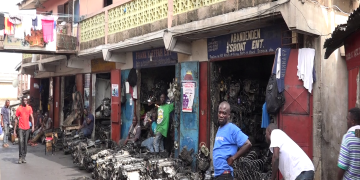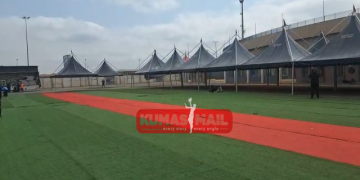Aircraft Accident Investigator, Captain Paul Forjoe, has called for urgent modernization of the Ghana Air Force fleet following the August 6 helicopter crash.
In presenting the committee report, Captain Forjoe outlined key safety recommendations to prevent future incidents.
He urged the acquisition of modern aircraft fitted with terrain avoidance warning systems and advanced navigation technology.
Captain Forjoe stated, “We have recommended that the Air Force acquire modern aircraft with terrain avoidance warning systems and modern navigation systems.”
He also emphasized the need for cockpit voice recorders and flight data recorders with audio-visual capabilities.
“That the aircraft should have cockpit voice recorders and flight data recorders, which are the audio-visual capable types,” he emphasized.
The recommendations include investing in flight simulators for recurrent training and contracting certified aviation weather service providers.
“That the Air Force should invest in simulators for recurrent training.
“That they contract certified aviation weather provider or providers, and that Ghana as a nation should try to have en route navigational aids, especially in remote areas,” he added.
Captain Forjoe further suggested establishing en route navigational aids, particularly in remote areas, plus implementing flight data monitoring and en route tracking systems.
He concluded by stressing the importance of upgrading ground support equipment to boost operational safety and readiness.
“We believe that they need to acquire ground support equipment, modernise what they have,” Captain Forjoe stressed.
Background:
On August 6, 2025, a Ghana Air Force Harbin Z-9EH helicopter crashed into a forested mountainside near Obuasi in the Ashanti Region, killing all eight people on board.
The helicopter, carrying senior government officials including Defence Minister Dr. Edward Omane Boamah and Environment Minister Dr. Ibrahim Murtala Muhammed, was en route to an event on fighting illegal mining. It took off from Kotoka International Airport in Accra at 9:12 a.m. but went off radar shortly after.
The crash investigation revealed the cause as a sudden loss of altitude and lift due to a downdraft linked to adverse and rapidly changing weather conditions over high terrain.
The helicopter lost lift without any change in power or pitch attitude, consistent with the downdraft phenomenon. Despite good standing and proper qualifications of the pilot and co-pilot, the environmental factors led to the fatal accident.
The wreckage was found destroyed by a post-crash fire, with all victims burnt beyond recognition. This crash is considered one of Ghana’s worst air disasters in over a decade and has sparked calls for improved aviation safety measures within the Ghana Air Force




































































